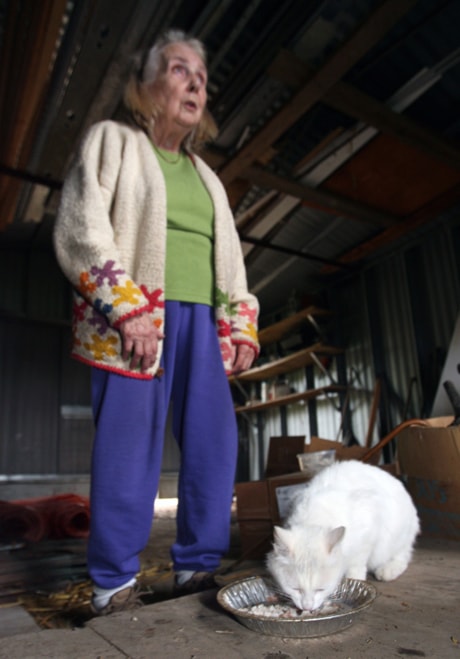A skinny white cat, her teats swollen from nursing new kittens, appeared at Olga Ferrer’s house in Red Deer.
In another part of the city, a visibly pregnant calico cat showed up on Justin Kubash and Sarah Myers’s doorstep on a miserably cold spring day.
For people who have compassion for all animals, turning needy mothers away was not an option.
In both cases, the people who fed and sheltered the wayward felines and their new broods found that they had bitten off more than they had planned to chew.
Ferrer said she had never intended to keep the white cat that was raising wild kittens under the floor of her garage. Nor did Kubash and Myers, whose own cat was not about to tolerate an interloper.
But both families were turned away when they attempted to surrender the strays and their kittens at both the Red Deer & District SPCA and at Riverside Kennels, operated by Alberta Animal Services, which is under contract to enforce the city’s cat and dog bylaws.
Ferrer and Kubash were told that, because they had been caring for the animals for more than two weeks, they had become their legal owners under the provisions of the Alberta Animal Protection Act. The cats were no longer defined as strays.
It boils down to too little space for too many cats, largely because too many people place too little value on cats in general, said Julie McInnis, executive director of the SPCA.
The Red Deer & District SPCA’s primary focus is on sheltering and finding new homes for stray animals, said McInnis.
With space in its newly-expanded facility for 30 dogs and 150 cats, the shelter accepts as many strays as it can, holding the healthy ones for as long as it takes to find them new homes, she said.
Combined with the cats and kittens that are simply abandoned at the front door, that leaves very little room to take in new cats, with the priority given to strays, said McInnis. She has a waiting list, but new cats cannot come in until there is a place to keep them, she said.
“We have just gone through kitten season, so we have a lot of people on our (waiting) list.”
Those people who will be contacted in order, as space comes available, said McInnis.
“That’s were the challenge comes in. We are what’s called a max-adopt facility. We will not euthanize for space, so if you bring me a cat today, I’m not going to kill that cat tomorrow so someone else can bring me another cat tomorrow. That’s contrary to our philosophy.”
The only time animals are put down is if they are aggressive or have health issues that cannot be dealt with at the shelter, said McInnis.
Animal control officer Duane Thomas said that, like the SPCA, he and his staff are frequently contacted by people who don’t want their cats anymore or who have taken in a stray and decided later that they didn’t want it after all.
People who want to bring animals in are required to leave their names, addresses and phone numbers as part of the kennels’ efforts to track down original owners, said Thomas.
Tracking includes looking for tattoos, tags and microchips he said.
Under city bylaws, healthy animals are kept for at least 72 hours before they are put up for adoption, he said.
In some cases, people are simply waiting too long to look for missing pets. People who come in a week later may find that their cat has already found a new home or that it was put down because there was no space left.
People who have tattooed, chipped or tagged their animals also need to remember to keep their contact information up to date so they can be found quickly when their animals turn up at a shelter, said Thomas.
McInnis said her organization is now pushing for a cat licencing requirement in an attempt to more clearly identify animals that have wandered away from their own homes.
The SPCA continues to push for spaying and neutering of all pets to help reduce the number of unwanted animals that show up on its doorstep, said McInnis. But too many people are still not getting the message, she said.
bkossowan@www.reddeeradvocate.com
